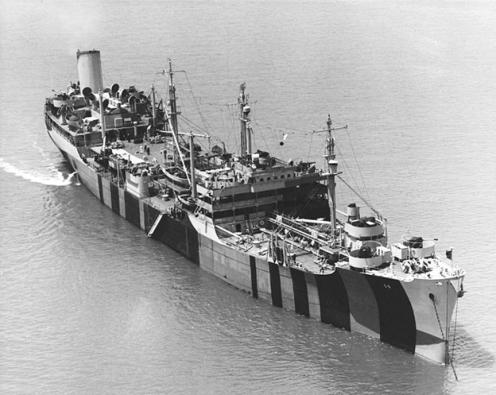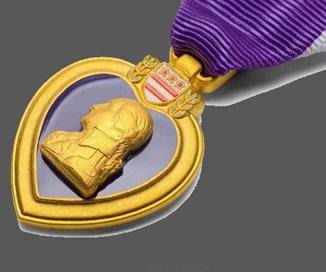
copyright © Wartime Heritage Association
Website hosting courtesy of Register.com - a web.com company
Wartime Heritage
ASSOCIATION
Remembering World War II
Name:
Darie Joseph Deveau
Rank:
Seaman First Class
Service Number:
8037117
Service:
USS Mississinewa,
United States Navy Reserve, US Navy
Awards:
Purple Heart
Date of Birth:
August 11, 1918
Place of Birth:
Salmon River, Digby Co., NS
Date of Enlistment:
February 14, 1944
Place of Enlistment:
Boston, Massachusetts
Address at Enlistment:
Massachusetts
Age at Enlistment:
25
Height:
5'' 8 1/2"
Complexion:
Light Brown
Hair Color:
Brown
Eye Color:
Brown
Occupation:
Fish packer
Marital Status:
Married
Date of Death:
November 20, 1944
Age:
26
Cemetery:
Manila American Cemetery, Philippines
Grave:
Walls of the Missing
Born Joseph Darie Deveau, Darie was the son of Enos (or Enoch) Joseph (1876-1946) and Mary Rose Deveau
(1882-1936). Darie had a sister Margaret, and two brothers, Sylvester and Alfred. In Salmon River, Darie’s
father worked as a farmer.
The family moved to the United States in the mid-1920’s. In 1930, they were living on Trenton Street in
East Boston, Mass. Much of the family worked in the fishing industry with both Darie’s father and brother
Sylvester working as fish cutters in 1930. Darie’s mother died in 1936. By 1940, they were living three
blocks north, at 2 White St Place. Sylvester had become a carpenter and the younger Alphie was working as
a fish wrapper.
Darie married Honor Mae Blackstock of Boston, Mass., on August 5, 1940 in Seabrook, Maine.
Two months later, he registered for the US Draft on October 16, 1940, in Boston, Mass. He was working as a
packer at the General Seafood Corporation on the Fish Pier in South Boston, Suffolk Co., Mass.
Darie enlisted February 14, 1944. After induction and basic training, he was assigned to the USS
Mississinewa (AO-59), a T3-S2-A1 auxiliary oiler of the US Navy, laid down on October 5, 1943. It was
launched March 28 and commissioned May 19, 1944.
Darie first boarded the USS Mississinewa the day before its commissioning on May 18, 1944, and appears on
its muster rolls on June 30, September 30, and October 2, 1944.
Having completed shakedown in the Chesapeake Bay, Darie Deveau and his ship sailed for Aruba, Dutch
West Indies, to take on its first cargo. Filling the cargo tanks on June 23-24, the ship continued on to the
Pacific Ocean, arriving in Pearl Harbor on July 10. As a unit of Service Squadron 10 (ServRon 10), the
Mississinewa then steamed to Eniwetok where it first fuelled ships of the 3rd Fleet. On August 25, the ship
departed for Manus where it supplied fuel and stores and delivered mail to ships of Task Force 38, the fast
carrier force, 32 and 31 during the assault and occupation of the Palaus.
Returning to Manus Island in Papua New Guinea on September 30, the ship replenished her tanks and again
headed north to refuel Task Force 38 as that force struck at Japanese shipping and shore installations in
the Philippines, on Taiwan, and in the Ryukyus in preparation for the Philippine campaign. On October 19,
having emptied its tanks into ships scheduled to take part in the landings at Leyte, it sailed to Ulithi in the
Caroline Islands, the ship’s new base. In early November, Mississinewa sailed its last fueling at sea
assignment, returning on the 15th.
The next day, the ship replenished its cargo tanks, filling them almost to capacity with 404,000 US gallons
of aviation gas, 9000 barrels of diesel fuel, and 90000 barrels of fuel oil. Four days later, November 20, it
was still anchored in berth No. 131. At 05:47, shortly after reveille, a heavy explosion rocked the oiler.
Seconds later, fumes in an aviation gas cargo tank ignited, causing a second explosion. Massive flames
immediately burst from midship forward. Bunker C oil immediately engulfed the ship, with aviation gas on
top of that. The aviation gas acted like a wick. Fanned by a light wind, the fire spread aft quickly. A few
minutes later the fires reached the after magazine and caused yet another explosion to tear through the
ship. The ship was abandoned and soon enveloped in flames over 100 ft (30 m) high. Fleet tugs were
immediately brought in to try to extinguish the fire, but in spite of their efforts, at about 09:00 the ship
slowly turned over and disappeared. Fifteen minutes later, the fire on the water was out and Ulithi
anchorage was again quiet.
It was determined the USS
Mississinewa was sunk by a
Kaiten manned torpedo. The
ship was the first to be hit by
these Japanese manned
torpedoes. The ship sank with a
loss of 63 hands as well as the
Kaiten suicide pilot.
Seaman First Class Darie Joseph
Deveau was listed as missing in
action, as his body was never
recovered. He is remembered
on the Walls of the Missing at
the Manila American Cemetery
in the Philippines.
Manila American Cemetery is
the largest of all American
overseas cemeteries occupying
over 150 acres on a prominent plateau, with a breathtaking view of the Manila skyline. Here rests more
than 17000 American servicemen and women, most lost their lives in the Philippines and New Guinea in
WWII, but over a dozen campaigns across the Pacific are represented there. On rectangular Trani limestone
piers within the hemicycles, are inscribed the Tablets of the Missing containing 36 286 names.
At the time of his death, his wife was living at 15 Marion Ave in Yonkers, in New York.
Darie Joseph Deveau






- World War I - Menu
- WWI Stories and Articles
- Photos - Yarmouth Soldiers
- Selection of World War I Songs
- WWI Casualties of Yarmouth, NS
- Those Who Served - Yarmouth, NS
- WWI Casualties Digby Co. NS
- WWI Casualties Shelburne Co. NS
- Merchant Mariners (1915) Yarmouth, NS
- Canadian Forestry Corps - Non Yarmouth Birth/Residence Enlistments
- US Draft Registry - Yarmouth NS Born


- World War II - Menu
- WWII Stories and Articles
- Telegraphist Air Gunners
- WWII Casualties of Nova Scotia
- US Casualties with NS Connection
- Far East/Pacific Casualties with NS Connection
- Merchant Navy Casualties Nova Scotia
- Nova Scotia WWII Casualties Holten Canadian War Cemetery
- D-Day Casualties - Nova Scotia
- CANLOAN Program Casualties - Nova Scotia
- Battle of the Bulge Casualties - Nova Scotia
- WWII Casualties Yarmouth NS
- Yarmouth Casualties - RCAF RAF Canadian Army WWII
- Yarmouth Co., Marriages WWII
- Casualties Non-Born/Residents with Connection to Yarmouth Co., Nova Scotia.
- WWII Casualties Digby Co., NS
- Non-Nova Scotian WWII Casualties Buried in Nova Scotia
- WWII RCAF Casualties Aged 16-18
- Brothers/Sisters Who Served - World War II













